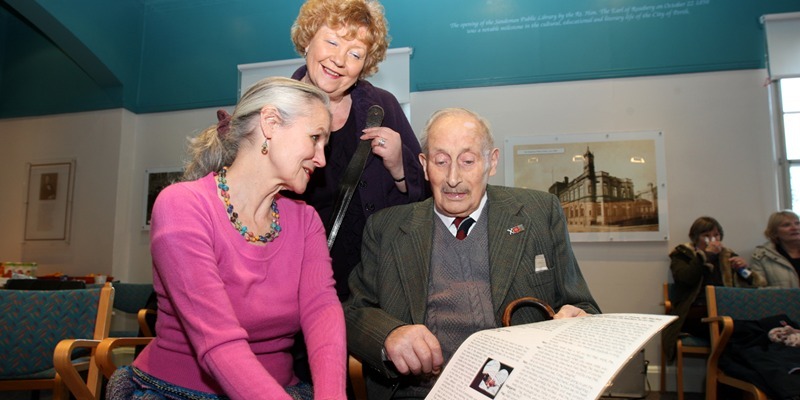A history of Scotland as told through folk memories and traditions has been brought together in a book, launched at the A. K. Bell Library in Perth.
In Our Day Reminiscences And Songs From Rural Perthshire weaves together excerpts of transcriptions and records by folklorist Margaret Bennett and illustrations by singer Doris Rougvie.
It concludes with Perthshire songs recorded to accompany the book.
One interested attendee at the launch was Pat McNab (98), from Crieff, whose picture as a kilted five-year-old features in the exhibition to accompany the launch, which runs until the end of the month.
He said he was given the strap for speaking Gaelic as a youngster at Glenartney Primary School.
At the launch, Provost John Hulbert said, “Folk memories and traditions are a kind of parallel history, but a history that is hardly recorded in history books.
“First ministers and prime ministers, acts of parliament, wars, treaties and so on are all meticulously recorded, and politicians write their memoirs to vindicate their actions.
“By contrast the life of ordinary people was never officially recorded, although it was, and is, just as important.”
He added, “A century ago, Scotland was in danger of disappearing out of sight as a nation with a culture and tradition of its own.
“Even the term Scotland was falling into disuse.
“The Post Office, especially, preferred to use the term North Britain, or NB, as the last line of the address for destinations in Scotland.
“And along with the addresses, the language, the traditions, all that makes Scotland distinctive, was dying out.”
Dr Hulbert said, “The last century, and especially the last 50 years has seen a huge change.
“Scotland today has a culture that is full of vitality.”
